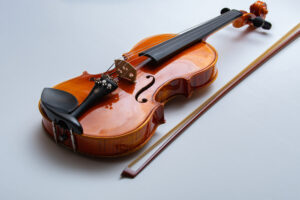 When we think of practicing violin, we often think of playing hours of scales and etudes and countless more hours spent playing through our pieces. However, many people are unaware that sometimes your best practice can happen without the violin. With our Washington D.C. violin lessons, you can learn these non-playing methods to add to your practice routine. Practicing without the violin is not only incredibly useful for improving your overall musicianship, but also comes in handy when you don’t have your violin while it’s being repaired or when you go on vacation.
When we think of practicing violin, we often think of playing hours of scales and etudes and countless more hours spent playing through our pieces. However, many people are unaware that sometimes your best practice can happen without the violin. With our Washington D.C. violin lessons, you can learn these non-playing methods to add to your practice routine. Practicing without the violin is not only incredibly useful for improving your overall musicianship, but also comes in handy when you don’t have your violin while it’s being repaired or when you go on vacation.
Listening to Recordings and Score Study
An important part of any musician’s practice is familiarizing yourself with your repertoire by listening to recordings and score study. Hearing the piece being performed by an expert can help you to understand what tricky passages should sound like. Additionally, listening to many professional recordings can give you ideas about interpretation that you hadn’t considered (ex. what your tempo should be, where to play rubato, where to slide or vibrate, or even what bowings and fingerings are best).
For more advanced students, score study is important for understanding the form, harmony, and other important details of the piece. Careful score study can show you how your part fits together with the piano or orchestra parts and understanding and analyzing the harmony is important for phrasing and intonation. Discovering these details for yourself is very important for taking ownership of your music and your interpretation of a piece.
Music Reading Skills
For beginner and intermediate students, we spend a lot of time working to be fluent in reading music, like how you would learn a language. A good way to practice your music reading skills is to quiz yourself on note names and fingerings and to make sure you can identify key signatures, time signatures, and rhythms. This can be done by looking at your music, or by making flash cards or using music theory practice websites and apps. You can also get the input of a Washington D.C. violin teacher. The faster you can read music, the easier it will be to learn new pieces.
Aural Skills and Rhythm Practice
In order to get the most out of your violin lessons, it is important that you develop a good ear. Aural skills training during your lessons can help with this, but it is important you practice this on your own. Violin students can begin aural training by singing scales and intervals and eventually move to practice singing simple melodies at sight when only given the first pitch. Honing your aural skills is integral for playing well in tune and is particularly important for executing clean shifts on the violin. Additionally, we want to develop a good sense of internal rhythm and that can be done with clapping, counting, and speaking rhythms. Both of these skills can be honed with the help of music theory websites like teoria.com and musictheory.net, or with practice books that focus on either rhythm or pitch.
Mental Practice
Lastly, an important tip for violin improvement is mental practice. This is when you go through the piece in your head as if you are playing it. The purpose of this is to help memorization and to ensure that your interpretation comes from your ideas of the piece, rather than the technique required of you when you’re playing violin. Oftentimes a difficult passage will just sound difficult because we are focusing on a tricky fingering or bowing, but if we go through it in our heads without the violin we can shift the focus to how it would sound if it were not difficult.
If you are considering violin lessons for a loved one or even have questions contact us today! All of our instructors are thoroughly vetted, professional, and passionate. They can either come to your home to teach or can also provide online music lessons. Our virtual music lessons are taught by local music teachers who plan their lessons to suit your child.
By Emily Doveala
